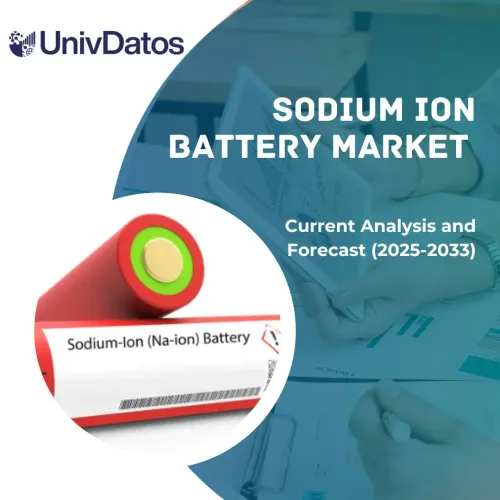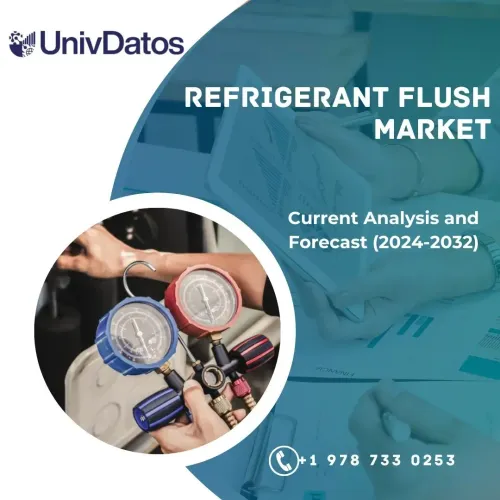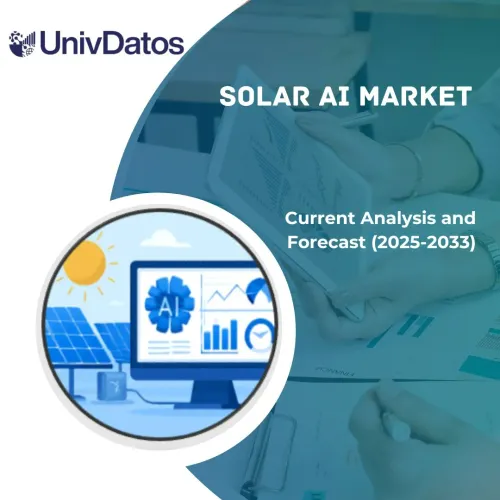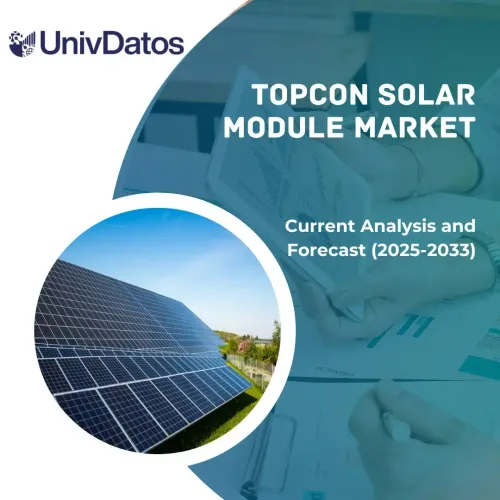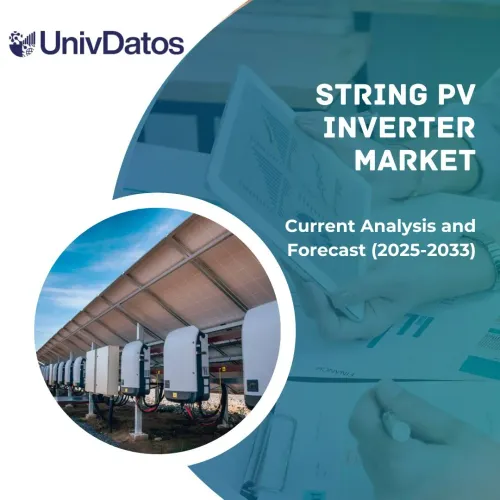- Home
- About Us
- Industry
- Services
- Reading
- Contact Us
Floating Wind Power Market: Current Analysis and Forecast (2022-2030)
Emphasis on Platform (Barge, Semi-submersible, Spar, and Tension-leg platform (TLP)); Plant Capacity (0.1 – 3 GW, 3.1 – 6 GW, and Above 6 GW); and Region/Country
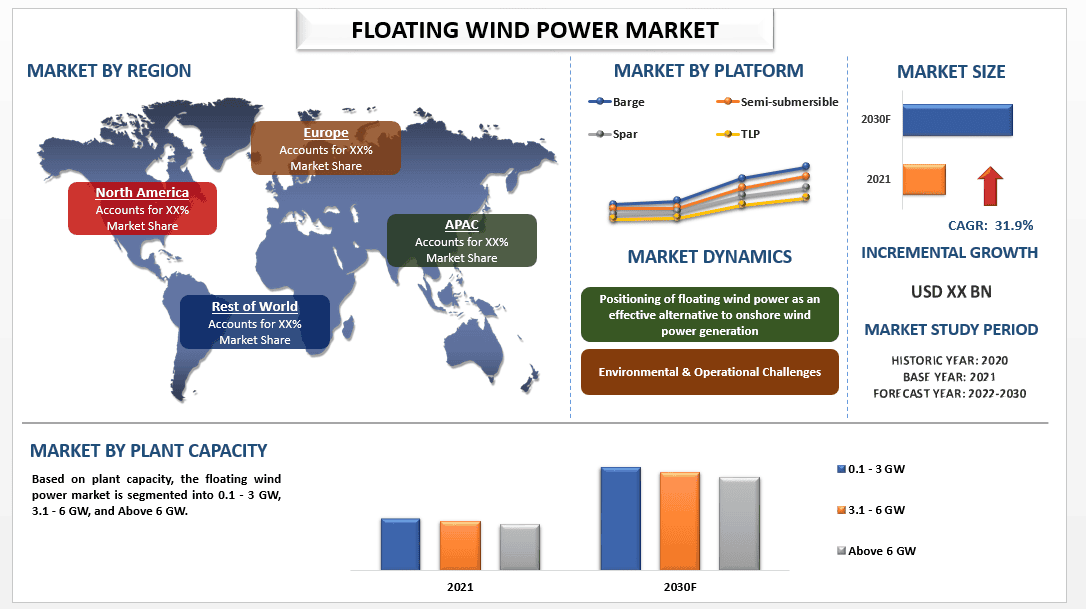
Global Floating Wind Power Market is expected to grow at a skyrocketing rate of around 31.9% during the forecast period. Floating Wind Power refers to a technology that enables the deployment of wind turbines in deep offshore waters where the water depth exceeds the maximum depth that traditional fixed-bottom foundations can support. Floating wind turbines are mounted on a floating structure such as a spar, barge, semi-sub miserable, and others that allow them to operate in deep waters. Where wind speeds are typically higher and more consistent, increasing the amount of electricity generation. Also, owing to the positioning of floating wind power as an effective alternative to onshore wind power generation. For instance, The Hornsea Phase 2 offshore wind farm will become the largest wind farm in the world, when operational in 2022. It will generate 1.3GW of green energy from 165 8MW wind turbines, which is enough to supply 1.4 million homes in the U.K. Additionally, factor such as ease of supply chain limitations within the wind power generation components industry also leads to the growth of the market.
Siemens Gamesa Renewable Energy, S.A.; Vestas; MITSUBISHI HEAVY INDUSTRIES, LTD.; Principle Power Inc.; GENERAL ELECTRIC; Equinor ASA; Hexicon; Suzlon Energy Limited; Aker Offshore Wind; Naval Group are some of the key players in the market. Several M&As along with partnerships have been undertaken by these players to facilitate customers with hi-tech and innovative products/technologies.
Insights Presented in the Report
“Amongst platform, Semi-submersible is expected to grow significantly during the forecast period”
Based on platform, the floating wind power market is segmented into the barge, semi-submersible, spar, and tension-leg platform (TLP). Semi-submersible is expected to grow significantly during the forecast period. This is mainly because Semi-submersible platforms provide stability in rough seas, which is important for offshore wind installations. They are also able to support large wind turbines and other equipment required for wind power generation. Thus, such factors are escalating the growth of the platforms which will increase the market growth of floating wind power.
“Amongst Plant Capacity, 3.1-6 GW is expected to grow with a significant CAGR during the forecasted period”
Based on Plant Capacity, the floating wind power market is segmented into 0.1 – 3 GW, 3.1 – 6 GW, and Above 6 GW. 3.1-6 GW is expected to grow with a significant CAGR during the forecasted period. This is mainly due to factors such as larger capacity floating wind power projects tend to be more stable in rough sea conditions, which improve the reliability of the energy production and increase the project lifespan. Additionally, the size of the project decreases the cost of energy production which helps to meet the energy demands of a larger population or industry. Thus, such factors lead to the increasing use of floating wind power in the market.
Floating Wind Power Market Report Coverage

“Europe is anticipated to grow at a substantial CAGR during the forecast period”
In 2021, Europe is anticipated to grow at a substantial CAGR during the forecast period. This is because of favorable wind conditions, the need for renewable energy, technological expertise, and others available in the region. Such factors help in increasing the use of floating wind power in the European region. Additionally, Europe has the best wind resources in the world, particularly in coastal areas such as the Baltic Sea, the North Sea, the Northeast Atlantic Ocean, the Mediterranean Sea, the Black Sea, and the outermost regions. Thus, making the European Union set ambitious targets to reduce greenhouse gas emissions and increase the share of renewable energy in its energy mix. Furthermore, many major players are driving investment in floating wind power projects, as companies seek to meet their sustainability targets and reduce their carbon footprint. For instance, in April 2022, Repsol and Ørsted developed offshore wind projects. Aimed to have 3GW of floating offshore wind capacity installed by 2030.
Reasons to buy this report:
- The study includes market sizing and forecasting analysis validated by authenticated key industry experts.
- The report presents a quick review of overall industry performance at one glance.
- The report covers an in-depth analysis of prominent industry peers with a primary focus on key business financials, product portfolios, expansion strategies, and recent developments.
- Detailed examination of drivers, restraints, key trends, and opportunities prevailing in the industry.
- The study comprehensively covers the market across different segments.
- Deep dive regional level analysis of the industry.
Customization Options:
The global floating wind power market can further be customized as per the requirement or any other market segment. Besides this, UMI understands that you may have your own business needs, hence feel free to connect with us to get a report that completely suits your requirements.
Table of Content
Research Methodology for the Floating Wind Power Market Analysis (2022-2030)
Analyzing the historical market, estimating the current market, and forecasting the future market of the global floating wind power market were the three major steps undertaken to create and analyze the adoption of floating wind power in major regions globally. Exhaustive secondary research was conducted to collect the historical market numbers and estimate the current market size. Secondly, to validate these insights, numerous findings and assumptions were taken into consideration. Moreover, exhaustive primary interviews were also conducted, with industry experts across the value chain of the global floating wind power market. Post assumption and validation of market numbers through primary interviews, we employed a top-down/bottom-up approach to forecasting the complete market size. Thereafter, market breakdown and data triangulation methods were adopted to estimate and analyze the market size of segments and sub-segments of the industry pertains to. Detailed methodology is explained below:
Analysis of Historical Market Size
Step 1: In-Depth Study of Secondary Sources:
Detail secondary study was conducted to obtain the historical market size of the floating wind power market through company internal sources such as annual reports & financial statements, performance presentations, press releases, etc., and external sources including journals, news & articles, government publications, competitor publications, sector reports, third-party database, and other credible publications.
Step 2: Market Segmentation:
After obtaining the historical market size of the floating wind power market, we conducted a detailed secondary analysis to gather historical market insights and share for different segments & sub-segments for major regions. Major segments are included in the report as platform and plant capacity. Further country-level analyses were conducted to evaluate the overall adoption of testing models in that region.
Step 3: Factor Analysis:
After acquiring the historical market size of different segments and sub-segments, we conducted a detailed factor analysis to estimate the current market size of the floating wind power market. Further, we conducted factor analysis using dependent and independent variables such as various platform and plant capacity of floating wind power. A thorough analysis was conducted for demand and supply-side scenarios considering top partnerships, mergers and acquisitions, business expansion, and product launches in the floating wind power market sector across the globe.
Current Market Size Estimate & Forecast
Current Market Sizing: Based on actionable insights from the above 3 steps, we arrived at the current market size, key players in the global floating wind power market, and market shares of the segments. All the required percentage shares split and market breakdowns were determined using the above-mentioned secondary approach and were verified through primary interviews.
Estimation & Forecasting: For market estimation and forecast, weights were assigned to different factors including drivers & trends, restraints, and opportunities available for the stakeholders. After analyzing these factors, relevant forecasting techniques i.e., the top-down/bottom-up approach were applied to arrive at the market forecast for 2030 for different segments and sub-segments across the major markets globally. The research methodology adopted to estimate the market size encompasses:
- The industry’s market size, in terms of revenue (USD) and the adoption rate of the floating wind power market across the major markets domestically
- All percentage shares, splits, and breakdowns of market segments and sub-segments
- Key players in the global floating wind power market in terms of products offered. Also, the growth strategies adopted by these players to compete in the fast-growing market
Market Size and Share Validation
Primary Research: In-depth interviews were conducted with the Key Opinion Leaders (KOLs) including Top Level Executives (CXO/VPs, Sales Head, Marketing Head, Operational Head, Regional Head, Country Head, etc.) across major regions. Primary research findings were then summarized, and statistical analysis was performed to prove the stated hypothesis. Inputs from primary research were consolidated with secondary findings, hence turning information into actionable insights.
Split of Primary Participants in Different Regions
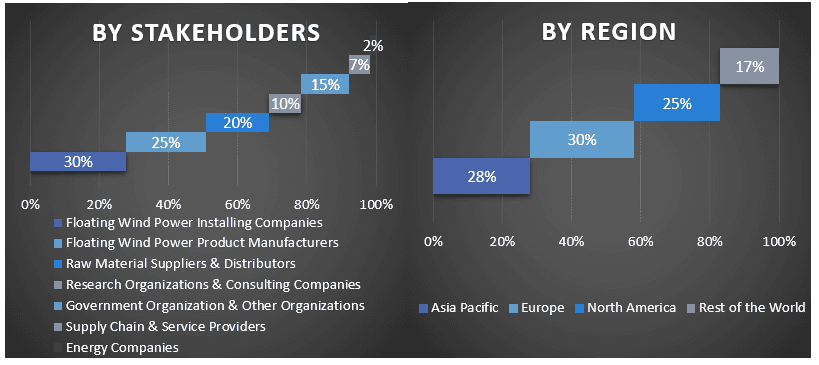
Market Engineering
The data triangulation technique was employed to complete the overall market estimation and to arrive at precise statistical numbers for each segment and sub-segment of the global floating wind power market. Data was split into several segments & sub-segments post studying various parameters and trends in the areas of platform and plant capacity in the global floating wind power market.
The main objective of the Global Floating Wind Power Market Study
The current & future market trends of the global floating wind power market were pinpointed in the study. Investors can gain strategic insights to base their discretion for investments on the qualitative and quantitative analysis performed in the study. Current and future market trends determined the overall attractiveness of the market at a regional level, providing a platform for the industrial participant to exploit the untapped market to benefit from a first-mover advantage. Other quantitative goals of the studies include:
- Analyze the current and forecast market size of the floating wind power market in terms of value (USD). Also, analyze the current and forecast market size of different segments and sub-segments
- Segments in the study include areas of platform and plant capacity.
- Define and analysis of the regulatory framework for the floating wind power
- Analyze the value chain involved with the presence of various intermediaries, along with analyzing customer and competitor behaviors of the industry.
- Analyze the current and forecast market size of the floating wind power market for the major region.
- Major countries of regions studied in the report include Asia Pacific, Europe, North America, and the Rest of the World.
- Company profiles of the floating wind power market and the growth strategies adopted by the market players to sustain in the fast-growing market
- Deep dive regional level analysis of the industry
Related Reports
Customers who bought this item also bought


